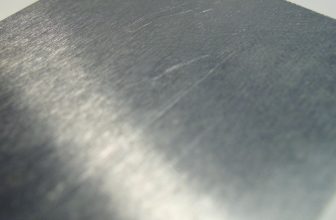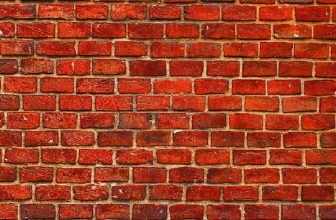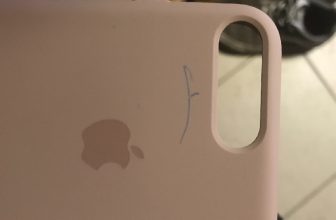How to Get Rid of Moss Between Pavers
If you have a moss problem between your pavers, it can be challenging to get rid of. Therefore, you must use the right products and techniques to minimize damage to your pavers. In this article, we will go over how to get rid of moss between pavers so that you can enjoy a beautiful yard again!
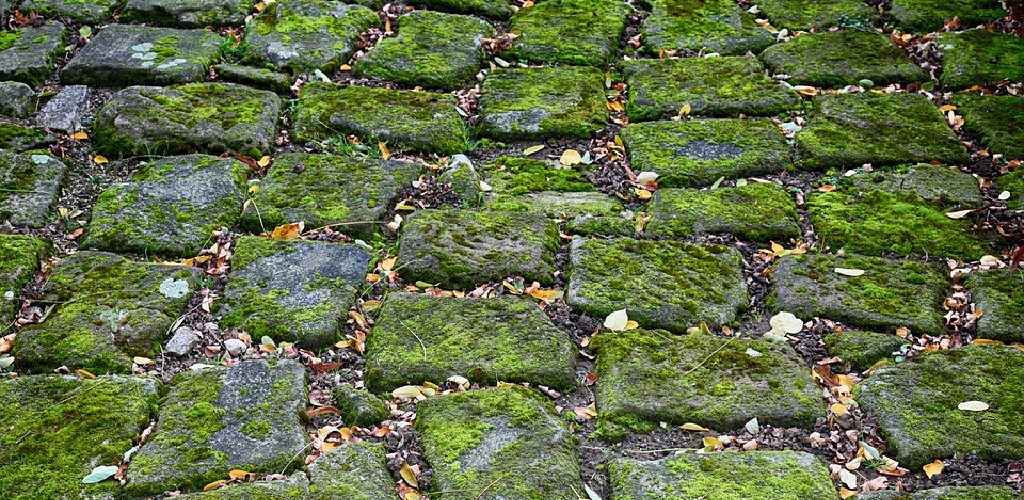
Moss between pavers can be a nuisance and is not always easy to get rid of. Moss thrives in moist, shady areas such as next to your home’s foundation or underneath the deck. Moss may have been growing beneath your paver stones for years, and you didn’t know it! Here are some ways to get rid of moss between pavers:
What is Moss?
Moss is a tiny, green plant that grows in dense clumps or mats. It does not have any roots and typically thrives in damp, shady areas with low soil nutrients. Moss can easily grow between pavers because it can retain moisture and does not require much sunlight to survive. While some people may like the look of moss between pavers, it can quickly become a problem if left unchecked. It can make your pavers slippery and unsightly, and it may even cause damage to the surface of your pavers over time if not properly removed.
Why Should You Get Rid of Moss Between Pavers?
Aside from the fact that moss can make your pavers slippery and damage them, there are other reasons why you should get rid of it. First, moss can attract insects and pests, such as ants, which can then spread to your home or garden. Second, if left untreated, moss can continue to spread and take over your entire yard, making it difficult to remove.
Finally, moss can also block the drainage between pavers, causing water to pool and potentially lead to other issues such as mold growth or damage to the paver foundation. Overall, removing moss between pavers will not only improve the appearance of your yard but also prevent potential problems in the future.
Needed Materials:
Before you start removing moss between your pavers, make sure you have the necessary materials on hand. Here are some things that you will need:
Garden Gloves:
Moss can be slippery, so it’s essential to wear gloves while handling it. This will also protect your hands from any potential irritants or chemicals that you may use in the removal process.
Broom or Brush:
A stiff-bristled broom or brush will help loosen and remove the moss between pavers. Make sure to use one with strong bristles to effectively scrub away the moss.
Garden Hose:
Using a garden hose with a high-pressure nozzle can help flush out any loosened moss and debris from between the pavers. This will also help wash away any leftover dirt or grime that may have accumulated over time.
White Vinegar:
White vinegar is an effective and environmentally friendly solution for killing and preventing moss growth. It is a natural acid that can disrupt the moss’s growth and break it down, making it easier to remove.
Baking Soda:
Baking soda is another natural solution that can help kill and prevent moss growth between pavers. It contains high levels of alkaline, which can change the pH level of the soil and make it less habitable for moss.
10 Ways How to Get Rid of Moss Between Pavers:
Here, we have mentioned some ways how to get rid of moss between pavers.
1. Apply Vinegar and Baking Soda
Apply a vinegar and baking soda solution to the area to dry out the moss. Create a mixture of one cup of water with one tablespoon of baking soda and one tablespoon of white vinegar. Pour the solution into the dry area and scrub away the moss with a stiff brush or broom. Leave it on for 24 hours before rinsing with water.
2. Kill Moss With Salt
Salt can kill moss. Apply a salt solution over the affected area using regular table salt. Use three cups of water to one cup of salt for this application. You will need to reapply the mixture more than once, but with time and patience, you should be able to get rid of the moss in your paver driveway or patio.
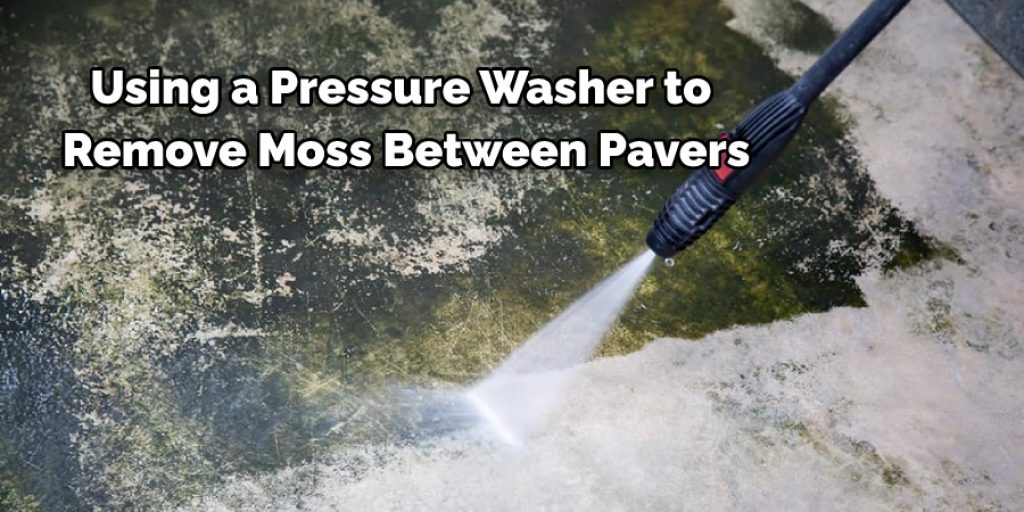
3. Apply Hose to Patio Area
Apply a sprayer to your garden hose and set it to the direct stream, not the spray setting. Next, turn on the water and aim for the area with moss in between your pavers. Cover as much of this area as you can with direct shots from the hose. You might have to step back every so often so that the pressure of the spray is not too intense for your paver patio.
4. Take up Moss in the Lawn Mower
Using a push mower with a bag, run over the moss between your pavers to pick it up and mulch it. The more delicate pieces of moss will decompose more quickly than larger pieces, so this can be an effective way to get rid of the moss in your paver patio or driveway. You may need to do this regularly if you have a lot of moss growth.
5. Remove Moss With a Push Broom
The push-broom method is probably one of the simplest ways to get rid of moss between your pavers. Just brush between each brick with a stiff-bristled push broom until the area looks clean and free of all traces of moss. Brush the edges and between each brick to ensure that all parts of the area are free from moss.
6. Try Using Bleach
Bleach can be used to kill moss. Mix one part bleach with nine parts water in a spray bottle and apply the mixture over the affected area. Be sure to wear protective gloves and eyewear when you are doing this, as bleach can irritate your skin and burn your eyes if it splashes on them. You will need to apply this solution more than once, so be patient.
7. Use Sandpaper on Moss
Use a piece of coarse-grain sandpaper to remove the moss from between your pavers. This cannot be easy with large areas of moss, but if you are diligent, it is possible to get most or all of the moss out with sandpaper. Try to use the coarsest sandpaper you have access to, or save this step for last if you are using finer grades of sandpaper on other steps.
8. Burn Moss With Boiling Water
If you do not mind waiting a few days, burning the moss with boiling water can effectively remove it. Place a pot of boiling water on top of the moss for several hours until you are sure that it has died. Then, try to remove any pieces that are not entirely dead by hand or with little tools like paint scrapers, putty knives, or wire brushes. Keep in mind that you will need to reapply this step more than once.
9. Use a Propane Torch
Burn the moss off your pavers with a propane torch. You can find these torches at most hardware and home improvement stores or rental centers. Be sure to follow all safety precautions included with your particular propane torch model when using this method for killing moss in between your pavers.
10. Power Wash
Using a pressure washer to remove moss between pavers is another option to consider. Just like the propane torch, you can rent these special power-washing machines for this purpose at most hardware and home improvement stores.
Before using the machine on your pavers, test it on an inconspicuous area of brick or concrete to ensure it will not damage them. If you choose to use this method, be sure to follow all safety precautions included with your particular pressure washer model.
Some Tips and Suggestions:
1. Use vinegar or hydrogen peroxide combined with liquid soap as an effective moss killer.
2. Mow and edge the grass around your pavers to eliminate the moss’s source of water.
3. Pour salt on top of the paver moss and spread across all exposed sections with a rake or broom, then pour rubbing alcohol over it to kill off the rest of the lichen.
4. Strip the paver moss off of your pavers with a chisel or grout-removal tool.
5. Pour boiling water over the now exposed cubbyholes between your pavers to kill any remaining bits of moss.
6. Lay landscape fabric over the paver moss to suffocate any remaining portions.
7. Cover the covered paver space with materials like gravel, decorative rocks, or bark chips.
8. Use a pressure washer to blast away the final remains of your moss infestation.
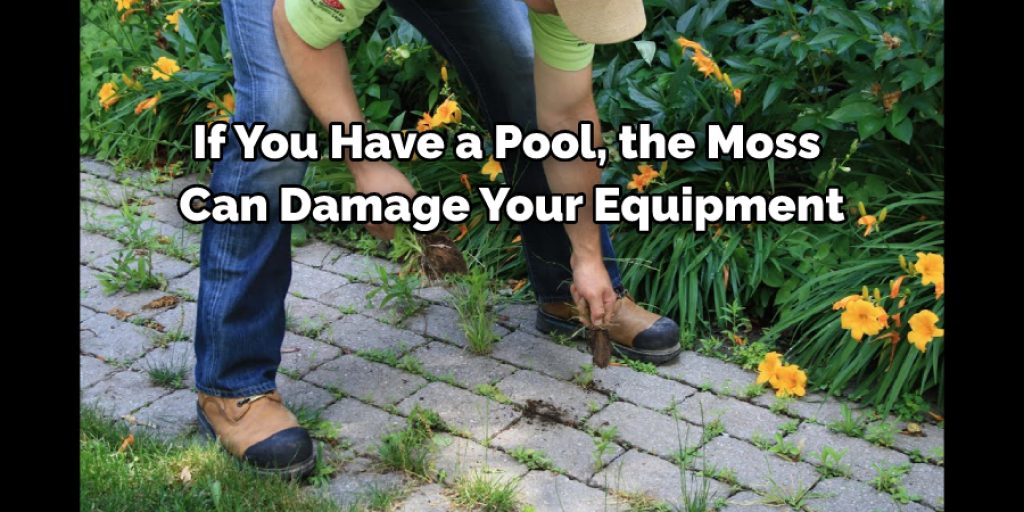
Why Should You Get Rid of Moss?
Moss between paver stones or in garden beds is a problem for most gardeners. However, there are ten reasons why you should get rid of moss and how to do it:
1. It’s Unsightly
You may think the moss looks nice, but if you consider all the benefits of getting rid of it, it will make your garden look a lot better.
2. It’s a Fire Hazard
Moss is a fire hazard because it can hold water from the surface and prevent it from being absorbed by the soil. Moss growing between your pavers will also provide fuel to fires if there is an external heat source nearby, such as a fire pit.
3. Moss Can Be Harmful to Your Pets and Kids
The moss toxins can cause serious problems if ingested by children or pets, such as dermatitis and respiratory issues. Toxin is a chemical called thallium sulfate, which acts as a salt that causes redness, inflammation, pain, and itchiness in humans.
4. It’s Expensive
If you have moss growing between your pavers, there is a chance that the paver might crack or break. This will cause erosion and create a mess, which you need to replace carefully without letting the soil spill out. It’s better to get rid of it instead of fixing it if this happens.
5. Moss Can Damage Equipment
If you have a pool, the moss can damage your equipment. This is because it acts as a shield and prevents chlorine from reaching the pool walls. Seeing this problem over time is when you know that it’s time to get rid of it.
6. Moss Causes Allergies
People with allergies are most at risk for developing symptoms when growing moss between pavers. If you have moss in your garden, it can be a source of rashes and respiratory problems.
7. Moss Creates a Slippery Surface
Moss between pavers can create a slippery surface. This is especially dangerous when you have older people, small children, or pets in the area.
8. Moss Can Affect the Ph of Your Soil
Moss growing in your garden bed can raise the alkalinity levels, which is bad for some plants. If you notice a change in color or a loss of leaves, then this is a sign that it may be time to remove it.
How Do You Stop Moss From Growing Between Pavers?
Moss between pavers is a common problem in many parts of the world, especially in incredibly humid northern regions. When moss grows in between pavement, it begins to act like a sponge, soaking up water in the ground and releasing it into the atmosphere when conditions are right.
As this occurs, your sidewalk or driveway can end up with large puddles in them after only slight rainfall. If you ignore the problem, these puddles will start to mold and can become quite an eyesore. The good news is that there are several effective ways to deal with the issue of moss between pavers, so you don’t have to ignore it any longer. We have already covered the methods above to get rid of moss between pavers.
Additional Tips:
- Regularly sweep or blow off any debris that accumulates on your pavers, as this can create a moist environment for moss to grow.
- Consider using a weed killer specifically formulated for moss. Follow the instructions carefully and avoid spraying directly onto nearby plants.
- Improve drainage in the area by adding gravel or sand between the pavers to encourage water flow away from the surface.
- Apply a layer of polymeric sand between pavers to prevent moss growth. This special sand hardens when exposed to water, creating a barrier that prevents weeds and moss from growing through.
- If your pavers are in a shady area, consider trimming back surrounding plants or trees to allow more sunlight onto the surface. Moss thrives in damp, dark areas.
- Regularly check the pH levels of your soil and make adjustments if necessary to discourage moss growth.
- Consider using a natural method such as vinegar or boiling water to kill off any remaining bits of moss between pavers.
By implementing these tips on how to get rid of moss between pavers , you can effectively get rid of and prevent future growth of moss between your pavers, keeping your outdoor space clean and safe. Remember to always follow safety precautions and happy gardening! So be sure to keep these tips in mind for a moss-free outdoor space. Happy gardening!
Frequently Asked Questions:
Q: Will Removing Moss From Between Pavers Damage the Pavers?
A: It is possible that using harsh chemicals or improper removal techniques may cause damage to your pavers. It is important to take precautions and use safe methods for removing moss. You can also consult a professional for advice on the best method for your specific pavers. It is also recommended that you thoroughly clean and seal your pavers after removing moss to prevent future growth and protect the surface.
Q: Can I Use Bleach to Get Rid of Moss?
A: While bleach may be effective in killing moss, it can also harm surrounding plants and grass. It is not recommended as a method for getting rid of moss between pavers. You can use safer alternatives such as natural weed killers or vinegar solutions. The best option is to prevent moss growth in the first place by improving drainage and sunlight exposure. You can also regularly sweep and clean the area to avoid moss growth.
Q: How Often Should I Remove Moss Between Pavers?
A: This will depend on the climate and conditions in your area. In humid and damp environments, moss may grow back quickly after removal. Regularly checking for moss growth and removing it as soon as possible is recommended to prevent it from spreading and causing potential hazards. You can also take preventative measures such as using polymeric sand or improving drainage to minimize the need for frequent removal.
Q: Is Moss Between Pavers a Sign of Poor Maintenance?
A: Not necessarily. Moss can grow in any outdoor area that provides the right conditions for its growth, such as dampness and lack of sunlight. It is important to properly clean and maintain your outdoor space, but even with regular maintenance, moss may still appear in certain areas due to environmental factors. Consistently removing moss and implementing preventative measures can help keep your outdoor space looking clean and well-maintained.
Conclusion:
Moss between pavers can be a nuisance, and it is essential to find out how to get rid of moss quickly. The best way to control moss growth between pavers is by preventing water from sitting on the surface for long periods. We recommend using a clean scrub brush and or pressure washer to remove any visible dirt and then use an oil-based sealant to penetrate the paver stones’ pores.
If you’re struggling with moss between your pavers, there are some tips to try. We have already provided the best ones on how to get rid of moss between pavers that might work for you if these don’t do the trick. Let us know how it goes so we can help other readers out, too!

